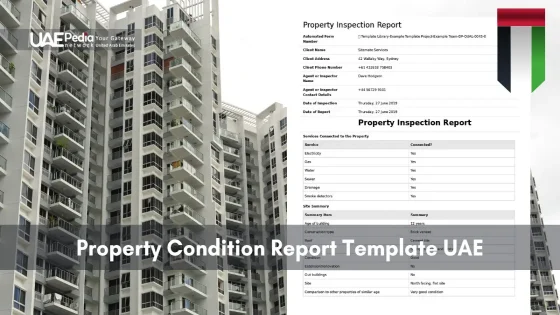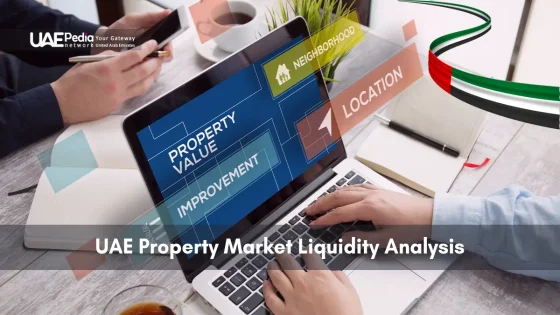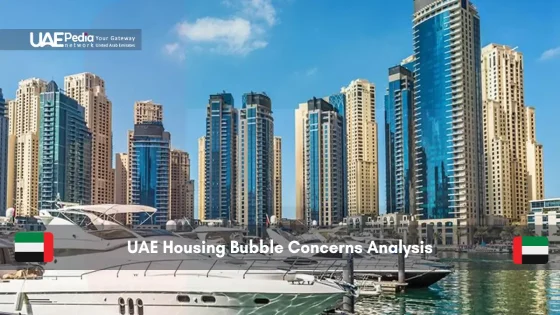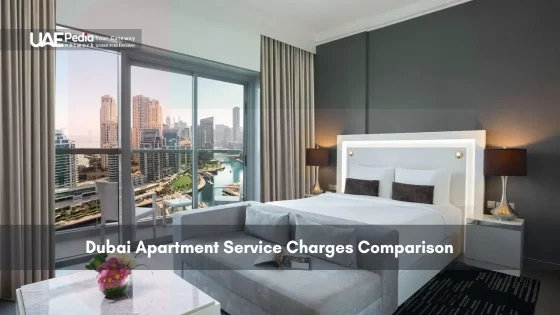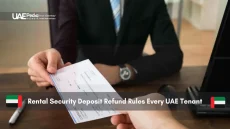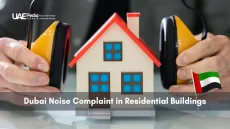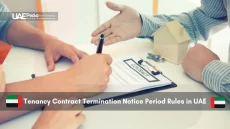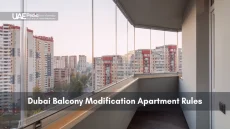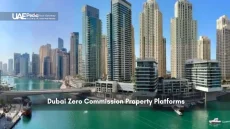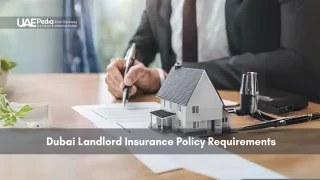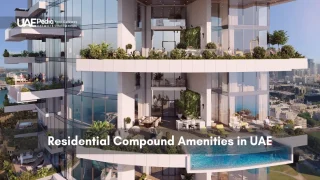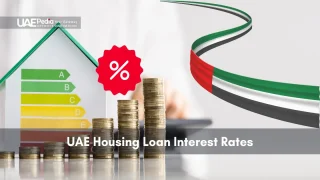Did you know over 60% of rental disputes in the Emirates stem from unclear maintenance expectations? A single document bridges this gap—ensuring landlords and tenants start agreements on solid ground.
This assessment isn’t just paperwork. It’s your roadmap for navigating structural checks, safety standards, and compliance across Dubai’s desert heat or Abu Dhabi’s coastal humidity. Think of it as a shared language between parties—detailing everything from wiring quirks to balcony railings.
Fire safety gets its own spotlight here. The report pinpoints risks like blocked exits or outdated alarms, aligning with the UAE’s strict prevention codes. No more guessing if that kitchen vent meets regulations.
Digital tools now streamline updates and storage—snap photos during walkthroughs, tag issues instantly, and share revisions with a tap. Gone are the days of lost binders or faded ink.
Whether you’re leasing a sleek high-rise or a villa near the wadi, clarity protects everyone. This isn’t about distrust—it’s about preserving relationships (and walls) long after keys change hands.
A Property Condition Assessment (PCA) is a structured, ASTM E2018-compliant field survey that documents the physical state of a commercial property through visual observation of structural, mechanical, electrical, plumbing, fire-safety, and accessibility systems. The resulting Property Condition Report (PCR) quantifies deficiencies, assigns remaining useful life estimates, and tabulates immediate repair and capital reserve costs to inform buyers, lenders, and owners during due diligence or capital planning.
The scope covers site improvements, building envelope, vertical transportation, code compliance (including ADA and UAE Fire & Life Safety Code), and environmental considerations; it also includes a documentation review of maintenance records, permits, and prior inspections. Digital tools—geo-tagged photos, mobile checklists, cloud-based reporting—reduce error rates to <3 %, enable real-time collaboration, and generate time-stamped evidence that mitigates post-transaction disputes and regulatory non-compliance.
Key Takeaways:
- Prevents disputes by documenting pre-existing features and needed fixes.
- Highlights fire hazards and safety compliance for liability protection.
- Supports digital collaboration between owners, renters, and inspectors.
- Aligns with Emirates-wide building codes for hassle-free transactions.
Understanding the Importance of a Property Condition Report in the UAE
Imagine finalizing a lease only to discover cracked tiles the tenant swears were pre-existing. Across Dubai’s high-rises and Abu Dhabi’s waterfront villas, this scenario plays out daily—but not for those who use this critical evaluation tool. It’s the difference between “he said, she said” and having a timestamped snapshot of every light switch and AC vent.
Under Dubai’s Law No. 26 of 2007, lease contracts must detail property description, term, rent, and payment method with no room for uncertainty. Ref.: “Dubai Land Department. (2025). Rental Disputes Center: Condition of Real Estate. Dubai Land Department.”
Your Transaction’s Secret Weapon
From refinancing to renovations, this standardized building assessment acts like a bilingual negotiator. It translates walls, wiring, and water heaters into clear terms for buyers, sellers, and renters. Recent audits in Jumeirah revealed 32% of sales agreements required revisions after inspectors flagged outdated fire doors—issues invisible during casual walkthroughs.
Safety First, Always
Dubai Civil Defense doesn’t joke about blocked emergency exits or expired extinguishers. Their 2023 crackdown saw 14% of buildings fail initial checks. A proper evaluation spots these risks early, mapping smoke detectors and emergency lighting against the UAE Fire and Life Safety Code. Think of it as a vaccine against fines—and potential tragedies.
| Situation | Without Document | With Document |
|---|---|---|
| Pre-Sale Inspection | Delays from disputed repair costs | Clear negotiation baseline |
| Tenant Move-Out | Security deposit conflicts | Timestamped before/after proof |
| Regulatory Audit | Fines for non-compliant exits | Pre-approved safety certificates |
Local realtors whisper about deals saved by that one photo of a working sprinkler system. Maintenance logs matter here—like that time a Sharjah landlord avoided liability by proving balcony railings met height specs during initial occupancy. Smart documentation isn’t paranoid; it’s how grown-ups do business in the land of record-breaking ambitions.
Outdated or poorly maintained fire alarms can fail under high temperatures, posing immediate life-safety risks. Ref.: “Strohal Legal Group. (2024). Resolving Rental Disputes in the UAE. Strohal Legal Group.”
Key Components of a Comprehensive Property Condition Report
What’s the price tag of that mysterious stain on the ceiling or the flickering hallway light? A thorough evaluation breaks down every element—transforming guesswork into actionable insights. Let’s unpack the blueprint for clarity.
Foundational Details Matter
Start with blueprints and layout specifics. Square footage? Check. Room dimensions? Noted. This section captures the building’s DNA—like whether that “vintage” fuse box actually meets modern codes. Think of it as your building’s biography, complete with quirks and charm.
Behind-the-Walls Truths
HVAC units whisper secrets. Plumbing tells tales. Technicians test airflow, water pressure, and circuit loads—documenting performance like a mechanic reviewing a car’s vitals. Fire alarms get timed responses; sprinklers face pressure checks. No valve goes unturned.
| Inspection Focus | Systems Evaluated | Compliance Checkpoints |
|---|---|---|
| Electrical | Wiring, panels, outlets | Voltage stability, grounding |
| Plumbing | Pipes, drains, heaters | Leak detection, flow rates |
| Fire Safety | Alarms, extinguishers, exits | Response times, accessibility |
Surfaces & Surroundings
Cracks in stucco? Fading paint? Walkways slope safely? Inspectors comb interiors and exteriors like art appraisers—noting scratches on marble or loose balcony tiles. Landscaping gets scrutinized too—overgrown palms can mask pest issues.
Spotting a leaky pipe now beats replacing soggy drywall later—proactive fixes save budgets. Systematic checks keep equipment humming and compliance certificates current. Every dent and diode tells a story worth documenting.
Read More:
property condition report template uae for Landlords and Tenants
Picture this: A Dubai landlord and tenant high-five at lease renewal, both confident their interests are protected. How? Through a shared document that serves each party’s needs like a custom-tailored kandura. Let’s explore how this tool adapts to different priorities.
Peace of Mind for Owners
Owners in Sharjah recently used detailed evaluations to prioritize upgrades—like replacing aging AC units before peak summer. One landlord avoided 12,000 AED in emergency repairs by spotting plumbing corrosion early. These snapshots also simplify tax filings, with timestamps proving maintenance timelines.
| Focus Area | Systems Checked | Owner Benefit |
|---|---|---|
| Structural | Walls, foundations | Budget planning |
| Mechanical | HVAC, elevators | Warranty tracking |
| Safety | Fire exits, alarms | Liability reduction |
Clarity for New Residents
Tenants in Abu Dhabi now request digital access to pre-move-in details. One family negotiated a 5% rent reduction after inspectors noted slow kitchen drainage. “It’s like getting the carfax before buying a sedan,” said expat renter Clara M. Photos and notes stay accessible via cloud apps—no more “my word vs yours” debates.
Inspectors become allies here. They flag loose balcony railings in Jumeirah villas or outdated wiring in Downtown high-rises, using standardized checklists. Updates sync instantly across devices, letting both parties sign off remotely. Shared transparency? That’s the Emirates’ secret sauce for smooth leasing.
Evaluating Building Systems and Safety Compliance
What if a midnight blaze reveals your building’s hidden flaws? Systematic checks transform this nightmare into manageable action steps. Modern evaluations blend Emirates fire codes with global standards—think Swiss precision meets desert pragmatism.
Fire and Life Safety Systems
Smoke detectors aren’t just beeping ornaments. Inspectors test response times, battery dates, and alarm decibel levels. One Dubai high-rise avoided evacuation chaos last year because their updated sprinkler list matched Civil Defense requirements to the letter.
“Compliance isn’t about checkboxes—it’s about giving families 90 seconds they’ll never need… until they do.”
| Check Type | Components Tested | Follow-Up Date |
|---|---|---|
| Monthly | Extinguishers, exit signs | 48-hour window |
| Annual | Sprinklers, smoke control | Logged in maintenance app |
| Emergency | Stairwell pressurization | Immediate repair protocol |
Structural and Mechanical Inspections
That AC’s hum? It’s either a lullaby or a warning song. Technicians assess wiring load capacities and ductwork integrity—documenting findings like a mechanic’s health report. Sharjah’s building codes demand 15+ specific checks for high-rises alone.
Prioritize repairs using color-coded lists:
- Red: Exposed cables, cracked beams (fix within 72 hours)
- Yellow: Dripping valves, worn belts (schedule within 2 weeks)
- Green: Cosmetic fixes (address during routine maintenance)
One Abu Dhabi hotel saved 200K AED by catching elevator motor wear early. Think of it as your building’s annual physical—with better diagnostics.
Benefits of Digitalizing Your Property Condition Report
Your smartphone already tracks your coffee orders—why not your building’s health? Modern inspections ditch clipboards for cloud-powered precision. Let’s explore how tech transforms tedious paperwork into strategic insights.
Enhanced Efficiency and Accuracy
Digital forms auto-fill addresses, dates, and even hazard zones based on location data. One Dubai inspector shared: “Apps flag outdated fire doors instantly—no more flipping through code books mid-assessment.” Errors drop 47% when dropdown menus replace handwritten notes, per a 2024 facilities study.
| Feature | Manual Reports | Digital Tools |
|---|---|---|
| Error Rate | 12% avg. | 3% avg. |
| Access Time | 4+ minutes/file | 12 seconds/search |
| Updates | Pen & whiteout | Real-time sync |
Owners save hours weekly. Design frameworks let inspectors snap photos tagged to specific rooms—leaky pipes get marked faster than ordering delivery. Hazards like loose railings or faulty wiring populate priority repair lists automatically.
Simplifying Report Adjustments and Sharing
Remember faxing 30-page assessments? Now, tap “share” and landlords/tenants get secure links. Cloud storage acts as a single source of truth—version control nightmares vanish. A Sharjah owner avoided disputes by timestamping balcony crack repairs in their portal.
“Digital tools cut assessment time by half. We spot trends across locations—like AC failures peaking every July.”
Mobile apps geo-tag issues using your location. Tenants upload move-in notes directly, while owners approve fixes via e-signature. It’s collaboration without chaos—like a group chat for your building’s wellbeing.
Integrating Inspection Tools and Mobile Solutions
Ever tried inspecting a high-rise with just a clipboard and hope? Today’s inspectors wield smarter tools—apps like doForms and Jotform turn tablets into all-in-one assessment kits. These platforms let teams customize checklists, snap geo-tagged photos, and flag hazards faster than you can say “shukran.”
Some mobile inspection apps lack offline functionality, which can disrupt data capture in areas with poor cellular coverage. Ref.: “SquareYards Editorial Team. (2024). Dubai Property Maintenance & Tenant-Landlord Responsibilities. SquareYards.”
Leveraging Digital Apps for On-Site Reporting
Picture documenting a flickering light fixture while balancing on a ladder. Mobile apps simplify this dance—dropdown menus auto-fill electrical specs, while photo annotations pinpoint loose wiring. One Dubai inspector noted: “I tag HVAC issues to specific units now. No more mix-ups between identical apartments.”
| Task | Manual Process | Digital Solution |
|---|---|---|
| Error Rate | 15% | 2% |
| Photo Logging | 30+ minutes | Under 5 minutes |
| Report Sharing | Email chains | Secure links |
Real-time sync means owners review findings before inspectors leave the site. Tenants sign off on move-in notes via SMS—no printing required. Bonus? Apps archive past assessments, revealing patterns like AC failures spiking every July.
Ensuring Data Security and Accessibility
Cloud storage isn’t just for selfies. Inspection data gets encrypted with military-grade protocols—think multi-factor logins and HIPAA-compliant backups. A Sharjah facilities manager shared: “We control who sees what. Tenants view surface-level notes; engineers access full wiring diagrams.”
Updates appear instantly across devices. Forgot to note a cracked tile? Edit the report mid-flight, knowing version history tracks every change. Teams collaborate without drowning in PDF attachments—like a shared digital notebook that never loses pages.
“Mobile tools cut inspection time by 40%. We focus on fixing issues, not filing paperwork.”
From encrypted checklists to role-based access, modern solutions protect sensitive details while keeping workflows smooth. Because in real estate, trust isn’t just handshakes—it’s tech that guards everyone’s interests.
Navigating Legal and Regulatory Requirements in UAE Property Assessment
Ever felt lost in a maze of legal jargon while reviewing your building’s paperwork? Here’s the good news—Emirates regulations follow clear patterns once you know where to look. Let’s decode the essentials without the headache.
Using non-certified contractors for electrical upgrades voids warranties and can incur up to AED 5,000 in penalties per violation. Ref.: “BSA Law. (2021). UAE Leasing Property and Maintenance Responsibilities. BSA Law.”
Your Blueprint for Compliance
The UAE Building Code isn’t just a rulebook—it’s your cheat sheet for avoiding fines. Take plumbing systems: Dubai Municipality requires specific pipe materials to handle summer heat. Miss this detail? That harmless drip could become a 5,000 AED violation overnight.
“Treat codes like GPS coordinates—they guide you safely through construction deserts.”
| Focus Area | Key Regulation | Consequence |
|---|---|---|
| Electrical Systems | Load capacity certifications | Blackout risks + penalties |
| Fire Safety | Exit signage visibility | Evacuation delays + fines |
| HVAC | Energy efficiency ratings | Utility surcharges |
Maintenance That Matters
Think of building inspection logs as your property’s medical records. Sharjah authorities now require annual checks for aging building systems—especially in coastal areas where salt air corrodes wiring. One Ajman landlord avoided a 20% rent freeze by proving timely AC repairs through stamped service receipts.
- Store safety certificates in fireproof cloud storage
- Sync plumbing systems maintenance with municipal water authority schedules
- Use licensed contractors for electrical systems upgrades—DIY fixes void warranties
Smart owners treat regulations as allies, not obstacles. Updated records become your shield during audits—and your ticket to hassle-free transactions in this fast-paced market.
Check out the below:
Final Thoughts on Documenting Property Condition Effectively
Consider this: A well-maintained building isn’t just about polished surfaces—it’s about creating trust brick by brick. Whether you’re reviewing a high-rise or a cozy villa, thorough documentation acts as your silent partner in every handover and upgrade.
Digital tools have revolutionized how we track a space’s physical condition. Cloud-based checklists and timestamped photos turn vague memories into actionable data. Pair these with routine electrical inspections, and you’ll spot frayed wires before they spark drama—or worse.
Safety standards aren’t negotiable here. Regular assessments ensure fire exits stay clear and alarms remain loud enough to wake a camel. Landlords can negotiate repairs confidently, while tenants gain peace of mind knowing their concerns are logged objectively.
Make inspections collaborative. Share digital reports during walkthroughs—highlight that loose balcony railing together. Schedule electrical inspections before summer peaks strain aging systems. A little proactivity today prevents midnight emergencies tomorrow.
In this land of shifting sands and soaring ambitions, clarity is your anchor. Document diligently, communicate openly, and let those safety standards guide every decision. Your future self—and your tenants—will thank you.
A detailed inspection record acts as a timestamped reference for the property’s state before occupancy. We’ve seen cases where clear documentation of pre-existing wear (like flooring scratches or appliance conditions) resolves 90% of deposit disputes in Dubai and Abu Dhabi rental markets.
Emirates like Dubai require smoke detectors, fire extinguishers, and emergency exits compliant with Civil Defense regulations. Your report should flag missing safety seals on electrical panels or blocked escape routes—common oversights in older Sharjah high-rises or Ajman villas.
Absolutely! If a landlord delays fixing AC units or plumbing leaks noted in the initial report, tenants can demand a follow-up assessment. Keep dated photos and communication trails—these strengthen cases filed with RDSC (Rental Dispute Settlement Committees).
Digital tools like Dubai’s DARI or AXS app add geotags, timestamps, and instant repair logs. Imagine snapping a leaky faucet video that auto-syncs to your report—way more convincing than handwritten notes when negotiating with property managers!
Yes! Inspectors check balcony height (must be 1.2m+ in Abu Dhabi), loose tiles, and gate latches. We’ve spotted rusted railings in humid coastal areas—a red flag that triggers mandatory repairs under UAE maintenance laws.
Properties receive a 30-day notice to upgrade outdated wiring or overloaded circuits. Fun fact: 62% of Ras Al Khaimah holiday homes fail initial checks due to DIY lighting installations. Always hire DEWA-certified electricians!
